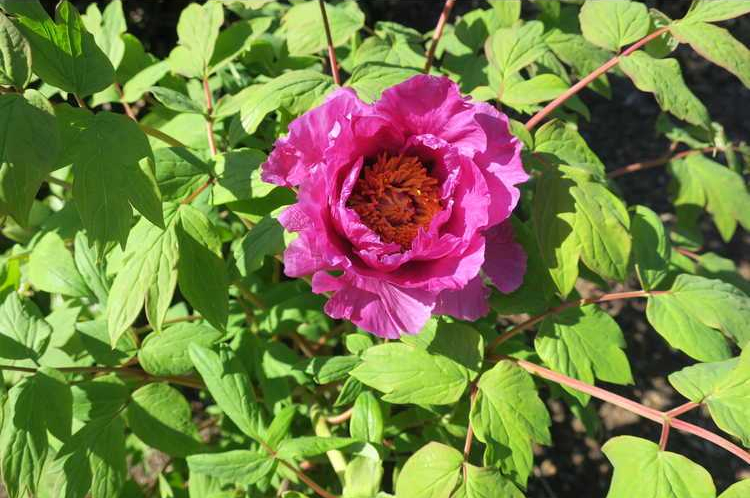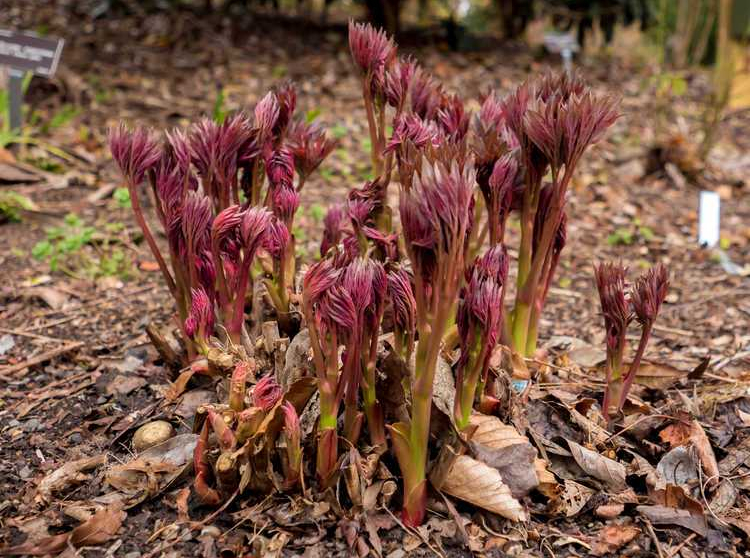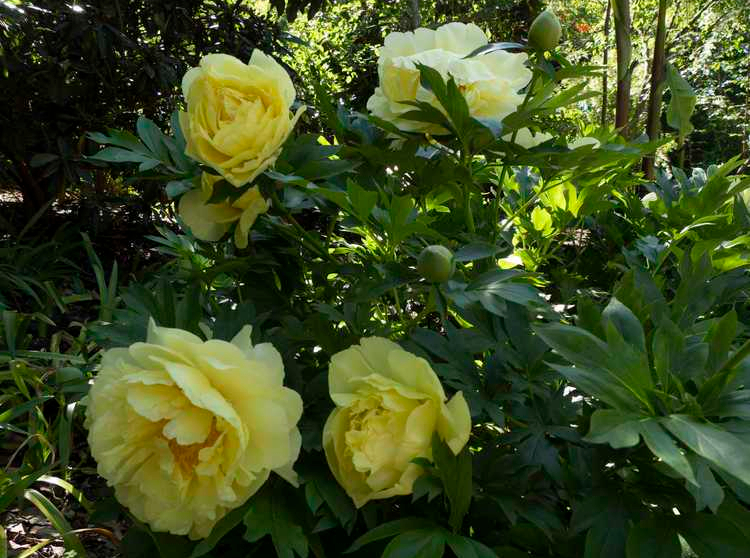 Paeonia lactiflora
Paeonia lactiflora
Photo credit: Debra Singer-Harter
JCRA Photo Collection
What gorgeous weather we had today, after all those storms on Monday! Today we reviewed one of the showiest garden plants with our crews, the peony (Paeonia sp.). Peonies bloom in mid- to late spring, and winter chilling is required in order for them to bloom, so they do not perform well in the deep south. Luckily in NC, we tend to get more chilling hours than many other southern states. Peonies can be very long-lived, and may be passed down like family heirlooms through generations of gardeners. I (Caitlin) knew a lady in Alexandria, VA, who said that her peony was over 113 years old, and had been passed down by her great grandmother. What a beautiful way to keep memories alive.
Peonies are generally used as flowering specimens in borders, perennial gardens, and cut flower gardens. For optimal growth, they require at least 6 hours of sun exposure and a well-drained soil. Botrytis blight and leaf blotch are the most common disease problems, so make sure there is adequate air circulation around your plants to help prevent these fungal infections. Japanese beetles or scale insects can sometimes cause issues as well. You may notice ants on your peonies because they are attracted to the sap excreted by the flower buds, but they will not damage the plants.
Maintenance Tips
- Fertilize peonies in the spring when stems are 2-3 inches high, using a low nitrogen complete fertilizer. 5-10-5 or 5-10-10 would be appropriate choices.
- Peonies are sensitive and easily burned, so do not allow fertilizer or uncomposted manure to come in contact with the plant stems.
- Remove seed heads after flowering is finished to encourage large flowers the next year.
- Understand the difference between tree peonies and herbaceous peonies. Herbaceous peonies go dormant in the winter and grow back from an underground crown, but tree peonies are shrubs. Herbaceous peonies can be cut back in the winter, but NEVER cut back a tree peony--it won't grow back.
 Paeonia suffruticosa 'Shimadajin'
Paeonia suffruticosa 'Shimadajin'
Photo credit: Maryann
Why isn't my peony blooming?
There are many factors that may prevent a peony from blooming. Investigate to see which of the problems listed below might be causing the problem in your case.
- The crown may be planted too deeply. The tips of the eyes (dormant buds) should be no deeper than 1 inch below the soil surface. Carefully dig up and replant at a shallower depth during late fall.
- The plant may be too young. Peonies don't generally bloom for at least the first three years after planting. Be patient!
- The plant may have received too much nitrogen, which stimulates vegetative growth at the expense of floral production. Stop fertilizing for a year or two, and make sure you are using a low nitrogen fertilizer (the first number should 5 or less), and that you are applying the correct rate.
- The plant may be located in an area that is too shady. Make sure the plant is getting at least 6 hours of full sunlight per day during the growing season, or move it to a new location in late fall.
- If the peony is too crowded, it may not bloom. Make sure there is an adequate amount of space, or you may need to do some transplanting.
- Nutrient deficiency can also cause a peony to not flower, but if this was the problem there would likely be other signs too, such as discoloration of the foliage (yellowing or reddening). Low nitrogen fertilizer or compost would solve the problem.
- Insect or disease pressure could cause a peony to not flower, or in the case of Botrytis, the flower buds may drop off without opening. You will see clear signs if this is the problem. Make sure there is adequate air circulation around the plant.
- Late freezes can kill the immature flower buds. Cover your plants in the afternoon or early evening to trap warm air before a late freeze is predicted, and take off the covers first things in the morning (large sheets work well for this).
 Paeonia 'Bartzella' - Emerging in spring
Paeonia 'Bartzella' - Emerging in spring
 Paeonia 'Bartzella' - In full bloom
Paeonia 'Bartzella' - In full bloom
Photo credit: Susan Baily
JCRA Photo Collection